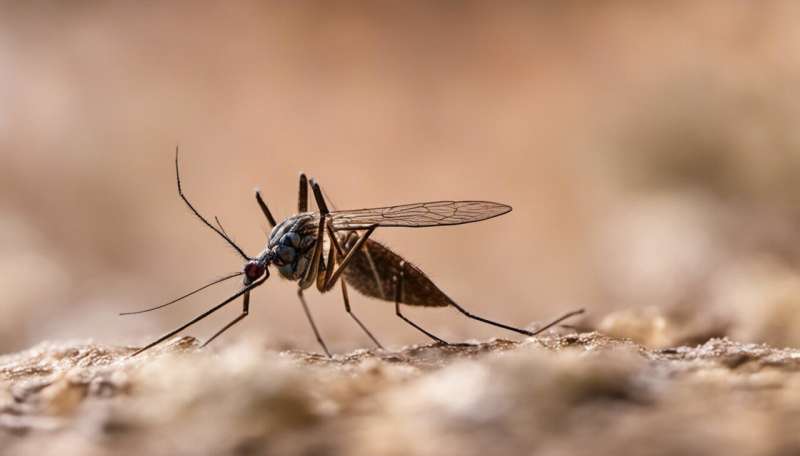High risk areas identified for mosquito-borne virus

Public health agencies could be better equipped to predict and manage mosquito-borne virus outbreaks in high-risk areas like the Kimberley and Pilbara thanks to a world first model produced by local researchers.
Angus Cook and Soon Hoe Ho from UWA in Perth together with Peter Speldewinde from UWA Albany's Centre, assessed the risk of Murray Valley encephalitis virus (MVEV) in WA using a Bayesian Belief Network (BBN).
There is no vaccine for MVEV, which is transmitted to humans by bite from an infected mosquito, and can cause permanent brain damage or death.
National epidemics occurred in 1951, when there were 48 cases and 19 deaths, and 1974, when there were 58 cases and 13 deaths.
In WA, MVEV is mainly endemic to the Kimberley, with sporadic cases in the Pilbara, Gascoyne, Midwest and Murchison areas over the past century, according to the Department of Health.
In 2011, WA policeman Constable Ryan Marron suffered brain damage and paralysis after contracting MVEV in the Kimberley.
The model shows the Kimberley is a high risk zone from December to April, due to warm, wet, humid weather conditions and numerous water bodies for mosquitoes to breed.
The Pilbara is rated medium risk, with Karratha and Port Hedland high risk zones between February and April.
Risk increases for Perth and Kalgoorlie
The rest of WA is low risk, but Perth and the Kalgoorlie area are considered medium risk from February to April, because rains leading up to summer create more mosquito breeding sites.
Similarly, the risk of contracting MVEV in Albany and Esperance increases from low to medium over summer, because the areas have numerous wetlands, which could support large numbers of mosquitoes.
However, the absence of Culex annulirostris in these areas means people shouldn't be concerned about contracting MVEV, Dr Speldewinde says.
He says the model's biggest benefit is its potential to predict outbreaks of other serious mosquito-borne diseases.
"The advantage of this model is it does not necessarily have to be for Murray Valley encephalitis—by changing a few variables we could use it for dengue fever or malaria," he says.
"We don't have dengue [fever] in WA at the moment but…if a female mosquito with eggs gets into WA, if it is climatically suitable, we might suddenly get dengue."
They combined factors affecting infection, including rainfall, temperature, humidity and the presence of water bodies to create the model.
It was based on the population density of mosquito species Cx. annulirostris, or common banded mosquito, and waterbird hosts.
More information: Soon Hoe Ho et al. A Bayesian Belief Network for Murray Valley encephalitis virus risk assessment in Western Australia, International Journal of Health Geographics (2016). DOI: 10.1186/s12942-016-0036-x
This article first appeared on ScienceNetwork Western Australia a science news website based at Scitech.
















